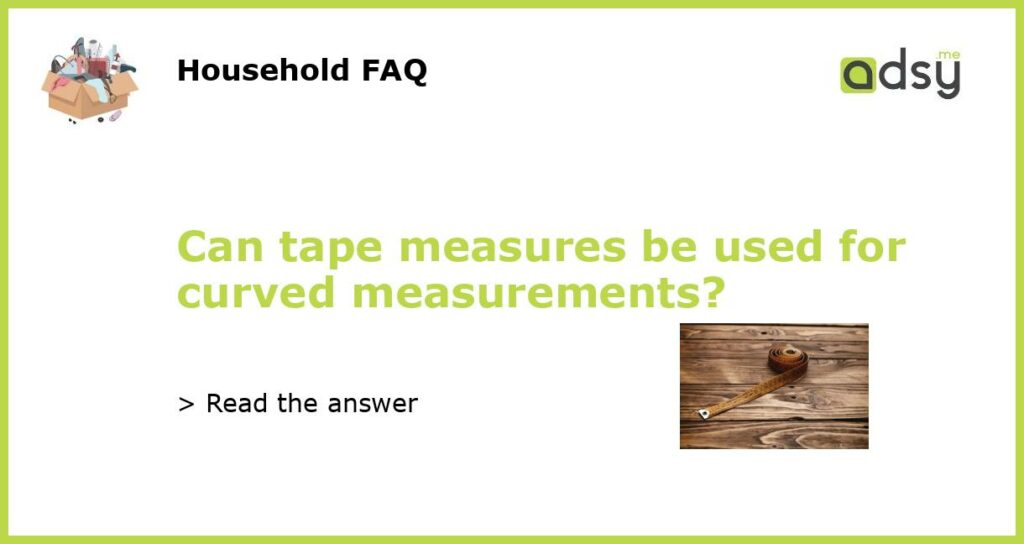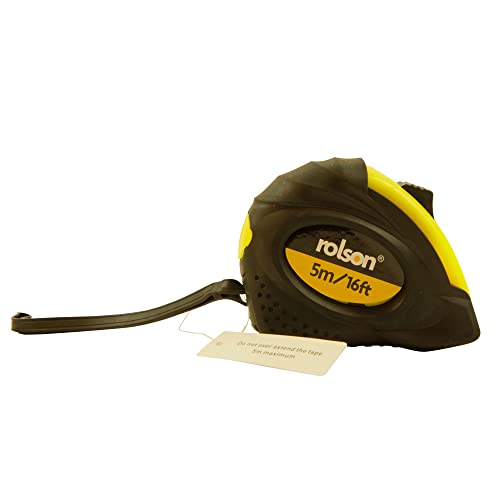Yes, tape measures can be used for curved measurements
Tape measures are essential tools in any toolbox or workshop. They are primarily used for linear measurements, allowing you to measure straight distances accurately. However, many people wonder if tape measures can also be used for curved measurements. While tape measures are not specifically designed for measuring curved objects, they can still be used for this purpose with some technique and precision. In this article, we will explore how tape measures can be used to measure curved objects and offer some tips for achieving accurate measurements.
Understanding the limitations
Before attempting to measure curved objects with a tape measure, it is essential to understand the tool’s limitations. Tape measures are designed with a straight blade, making them ideal for measuring straight objects like walls, beams, or boards. However, when measuring curved objects, such as pipes or cylindrical shapes, the tape measure’s blade will not follow the curve accurately, leading to potential inaccuracies.
Measuring curves with a flexible tape measure
One approach to measuring curves with a tape measure is to use a flexible tape measure. These tape measures have a thin, flexible blade that can bend around curves, allowing for more precise measurements. Flexible tape measures are commonly used in sewing, tailoring, and other industries that involve measuring curves. They can be useful for measuring body measurements or any other curved objects where accuracy is vital.
To measure a curve with a flexible tape measure, start by aligning the tape measure with the curve’s starting point. Gently bend the flexible blade to match the curve as closely as possible. Follow the curve with the tape measure, keeping it pressed against the object as you go. Once you reach the end of the curve, take note of the measurement displayed on the tape measure.
Alternative methods for measuring curved objects
If you do not have a flexible tape measure or need more accurate measurements, there are alternative methods for measuring curved objects. One common method is to use a piece of string or flexible wire to wrap around the curve. Once the string or wire fully covers the curve, mark the point where it starts and ends. Remove the string or wire and use a regular tape measure to measure the straight length between the marked points.
Another option is to use a compass or similar tool to trace the curve’s shape onto a piece of paper or cardboard. Once you have the shape, you can measure the straight distance between two points on the traced curve. This method is particularly useful for measuring irregular or complex curves.
Tips for accurate curved measurements
When using a tape measure or alternative methods for measuring curved objects, maintaining accuracy is essential. Here are some tips to help you achieve accurate curved measurements:
- Be gentle: When bending a tape measure or string around a curve, be careful not to distort the shape. Apply gentle pressure to ensure an accurate measurement.
- Use a consistent starting point: Always start your measurement from the same point on the curve to maintain consistency.
- Take multiple measurements: To ensure accuracy, consider taking multiple measurements from different points on the curve and averaging the results.
- Double-check with alternative methods: If precision is essential, consider using alternative methods like the string or tracing method to verify your measurements.
- Practice: Like any skill, measuring curved objects accurately takes practice. Don’t be discouraged if your first attempts are not perfect. With time and experience, you will improve your accuracy.
In conclusion, while tape measures are primarily designed for linear measurements, they can be used for measuring curved objects with some technique and precision. Using a flexible tape measure or alternative methods like strings or tracing can help you achieve more accurate measurements. Remember to be gentle, use consistent starting points, and consider double-checking with alternative methods when precision is crucial. With practice, you can become proficient in measuring curved objects with a tape measure.






